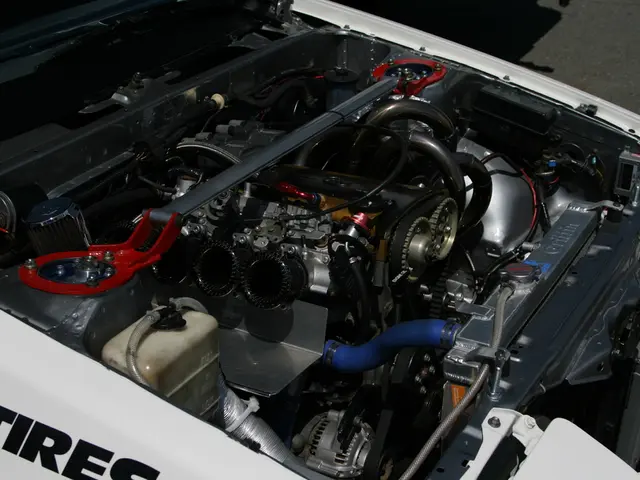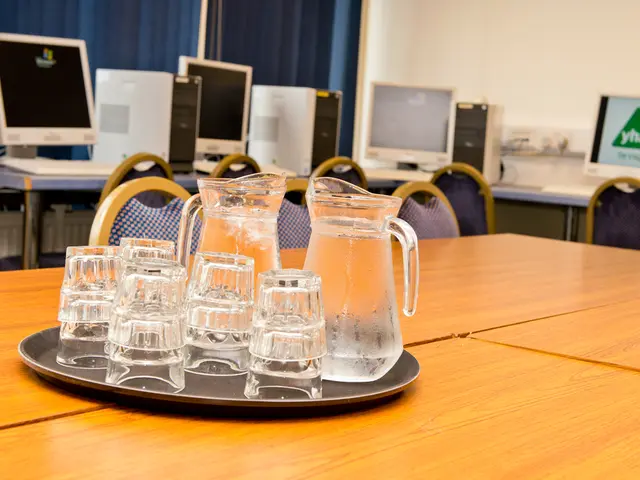Transform Your Single-Unit Application into Microservice Architecture
In the digital age, businesses are constantly seeking ways to enhance their web applications' scalability, maintainability, and resilience. One such approach is migrating a monolithic website to a container-based microservices platform on Google Cloud Platform (GCP). Here's a step-by-step guide to achieving this transition.
- Assessment and Planning
- Evaluate the current monolithic application's architecture, dependencies, and functionality on the website.
- Identify parts suitable for microservice decomposition, focusing on modules with scalability or maintenance challenges.
- Set clear objectives, such as scalability and fault isolation, and establish success criteria for the migration.
- Develop a detailed migration plan with timelines and resource allocation, factoring in GCP services like GKE, Cloud Build, and more.
- Decompose the Monolith
- Break the application into smaller parts based on business capabilities or domains (e.g., user management, product catalog).
- Use domain-driven design or bounded context concepts to define service boundaries, ensuring loose coupling and single responsibility for each service.
- Service Design and Identification
- Identify potential microservices candidates from decomposed modules.
- Define clear APIs and interfaces for each microservice.
- Choose appropriate communication patterns (REST, gRPC).
- Consider data ownership and database design for each microservice to avoid tight coupling.
- Containerize the Microservices
- For each microservice, create Docker containers.
- Write Dockerfiles that package the service code and its runtime dependencies.
- Test container images locally to verify the service runs correctly in isolation.
- Set Up GCP Environment
- Use Google Kubernetes Engine (GKE) to orchestrate containers.
- Configure a Kubernetes cluster on GCP.
- Set up Container Registry (or Artifact Registry) to store Docker images.
- Use GCP IAM for access control and secure service interactions.
- Implement CI/CD Pipelines
- Automate build, test, and deployment using Cloud Build or another CI/CD tool.
- Automate pushing container images to Container Registry.
- Deploy services onto GKE clusters using Kubernetes manifests or Helm charts.
- Migration Strategy
- Apply the Strangler Pattern: gradually replace parts of the monolith by routing corresponding functionality to the microservices.
- Use API Gateway on GCP (e.g., Apigee) as a single entry point for client requests, handling load balancing, authentication, and routing.
- Service Discovery and Communication
- Use Kubernetes service discovery for microservice communication within the cluster.
- For inter-service communication, consider a service mesh like Istio to manage routing, security, and observability.
- Logging, Monitoring, and Security
- Integrate centralized logging and monitoring tools (like GCP’s Operations Suite with Prometheus and Grafana).
- Monitor microservice health, performance, and logs in real-time.
- Implement security best practices, including authentication and encryption, consistently across services.
- Iterate and Optimize
- Continuously test, refine, and expand microservices.
- Automate scaling and failover by leveraging Kubernetes features.
- Optimize costs and performance on GCP based on collected telemetry.
This approach offers a gradual, controlled migration from a monolithic website to containerized microservices on GCP, leveraging Kubernetes orchestration, automated CI/CD, API gateways, and modern monitoring to achieve scalability and resilience. For detailed GCP-specific commands and configurations, refer to Google Cloud’s official documentation on GKE, Cloud Build, and Apigee.
It is essential to have a GCP environment set up and a strategy defined for service access and deployment before beginning the migration journey. The migration is done one feature at a time to avoid a single large-scale migration methodology. Apigee is a recommended managed API gateway for serving all site content by public APIs. Each feature can be independently managed and updated, leading to faster improvements.
Read also:
- Tesla is reportedly staying away from the solid-state battery trend, as suggested by indications from CATL and Panasonic.
- Tech Conflict Continues: Episode AI - Rebuttal to the Tech Backlash
- Online Advertising Consent Framework Faced with Significant Ramifications According to Belgian Data Protection Authority's Decision
- Container Tracking and Sustainable Shipping: Cutting Carbon Emissions!







